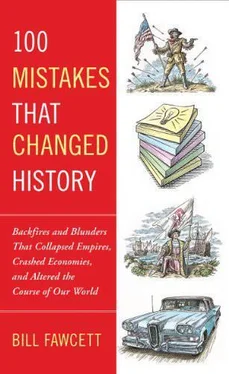This letter, from the highly respected veteran General Patrick Cleburne, was sent first to the general commanding the Army of Tennessee, General Thomas, in March 1864. It was then forwarded to the Confederate Congress. It eloquently argued for the enlistment and freeing of black soldiers:
Moved by the exigency in which our country is now placed, we take the liberty of laying before you, unofficially, our views on the present state of affairs… We have now been fighting for nearly three years, have spilled much of our best blood, and lost, consumed, or thrown to the flames an amount of property equal in value to the specie currency of the world. Through some lack in our system the fruits of our struggles and sacrifices have invariably slipped away from us and left us nothing but long lists of dead and mangled. Instead of standing defiantly on the borders of our territory or harassing those of the enemy, we are hemmed in today into less than two-thirds of it, and still the enemy menacingly confronts us at every point with superior forces. Our soldiers can see no end to this state of affairs except in our own exhaustion; hence, instead of rising to the occasion, they are sinking into a fatal apathy, growing weary of hardships and slaughters which promise no results…
The President of the United States announces that “he has already in training an army of 100,000 negroes as good as any troops,” and every fresh raid he makes and new slice of territory he wrests from us will add to this force. Every soldier in our army already knows and feels our numerical inferiority to the enemy… Our single source of supply is that portion of our white men fit for duty and not now in the ranks. The enemy has three sources of supply: First, his own motley population; secondly, our slaves; and thirdly, Europeans whose hearts are fired into a crusade against us by fictitious pictures of the atrocities of slavery… Like past years, 1864 will diminish our ranks by the casualties of war, and what source of repair is there left us?…
The Constitution of the Southern States has reserved to their respective governments the power to free slaves for meritorious services to the State. It is politic besides. For many years, ever since the agitation of the subject of slavery commenced, the negro has been dreaming of freedom, and his vivid imagination has surrounded that condition with so many gratifications that it has become the paradise of his hopes. To attain it he will tempt dangers and difficulties not exceeded by the bravest soldier in the field… The slaves are dangerous now, but armed, trained, and collected in an army they would be a thousand fold more dangerous; therefore when we make soldiers of them we must make free men of them beyond all question, and thus enlist their sympathies also…
Many of the officers who were fighting supported such a plan. General Robert E. Lee supported the enlistment of black men into the ranks. This solution solved many problems. It would have provided tens of thousands of new Confederate soldiers when they were desperately needed. By giving a way out to those slaves willing to fight for it, the Confederacy would have taken away from the Union Army a major source of recruits. The people of the Union were tired of the war and the high casualties. Draft riots were common, and after three years of conflict, recruiting was difficult. More than 100,000 black volunteer soldiers were serving with the Union Army by the end of the Civil War. Many of them were runaway slaves, and they relieved the pressure that conscription caused. Had these men seen a way to freedom that did not require a dangerous flight and risk to their families, many might well have fought for the Confederacy instead. That would have meant as many as 50,000 more Confederate soldiers and 50,000 fewer Union soldiers as well.
Beginning to free the slaves would also have gone a long way toward getting recognition from Britain and France. It had always been to the economic advantage of both European nations for the Confederacy to win since the South was their main supplier of tobacco and cotton, while the Union was their chief competitor for manufactured goods. But the question of slavery, which had been long banned by both countries, forced them to maintain a distance.
The mistake was simply to not even consider offering freedom to the slaves in exchange for fighting for the Confederacy. The reaction of the Southern press and politicians was loud and emotional. The idea was universally condemned by the Confederate Congress and the Davis administration. Racism and the desire to not let the war force what the Union Army was now striving to achieve overcame even desperation. By June 1864, Richmond was under siege, and by November, Union general W. Tecumseh Sherman’s independent army was cutting a swath through the heart of what remained of the Confederacy. There simply were not enough men to stop Sherman, but it did not have to turn out that way.
On the bright side, had the South implemented the policy suggested by two highly respected leaders in the Confederacy, we would possibly have had two separate and weakened nations, rather than one fifty-state unified superpower.
The Ultimate Weed
1876
So what is a story about a common plant doing in a list of 100 of the world’s greatest mistakes? If you live anywhere in the southern United States, where there are no hard frosts, you already know the answer.
Kudzu is a vine that originally grew on the rocky mountainsides of Japan. There it had to struggle with poor soil and cool weather. This made it an aggressive and hardy plant. In good soil and warm weather kudzu grows incredibly fast, often several inches per day. The joke in the southern United States today is that you have to close your windows at night to keep the kudzu from growing in overnight.
Kudzu was first introduced into North America in 1876. It was popular with a small number of gardeners, and just a few plants were grown until the 1920s. In those days, the ecological concern was not global warming, but soil erosion. This was the era leading into the Dust Bowl and anything that held the soil in place was popular. It also helped the plant’s popularity when it was discovered that kudzu was suitable for grazing as well. Its only drawback was that it could not survive a hard frost.
In the 1920s and early 1930s kudzu was the wonder plant. There were kudzu cookbooks and even kudzu clubs. Competitions were held to find new ways to use the tough vines and the broad leaves of the plant. In the early 1930s the U.S. government work programs paid workers to plant almost 2 million acres with kudzu. Then one day someone looked around and realized that wherever kudzu grew it killed off every other plant. The vine will climb and steal the sunlight from the tallest tree and grow so thickly not a single blade of grass survives. It was not saving the soil; it was threatening the entire ecology. Since that revelation, the government has spent tens of millions of dollars trying to kill off or slow the spread of the vine they had formerly been paying to have planted.
Today, even after years of eradication efforts, kudzu covers 7 million acres of land. Its range is limited only by frost and snow. A patch was even found in Canada in July 2009. The plants were growing in an area where Lake Erie kept the soil warm all year round. Kudzu has changed the face of the South. Drive along any highway, and you will see an area where the blanket of Kudzu leaves crawls like a green flood completely covering forests and fields. The killer plant can be easily recognized as it covers even the highest branches with its broad leaves. Today, kudzu is becoming a problem outside of the United States. The invasive plant is now being fought in northeastern Australia and northern Italy. Kudzu is a mistake that just keeps on growing and growing and growing some more.
Читать дальше












